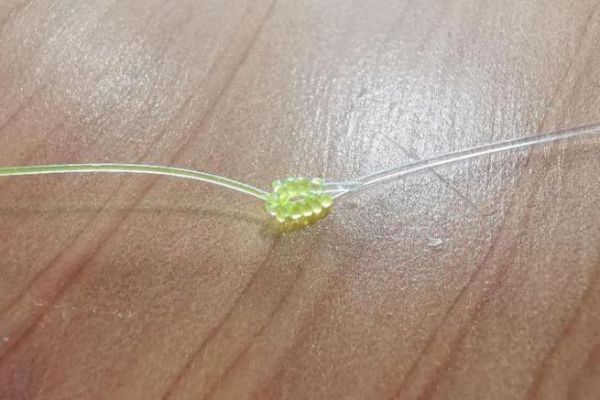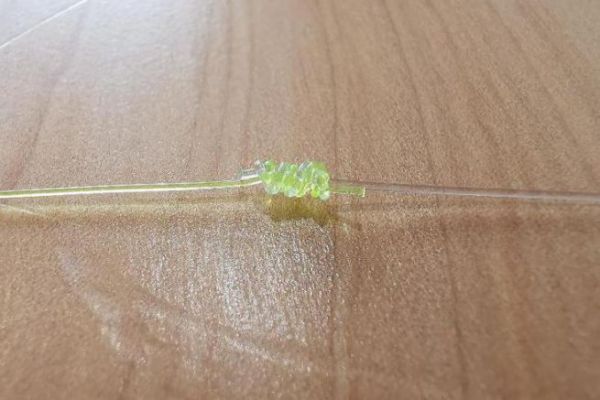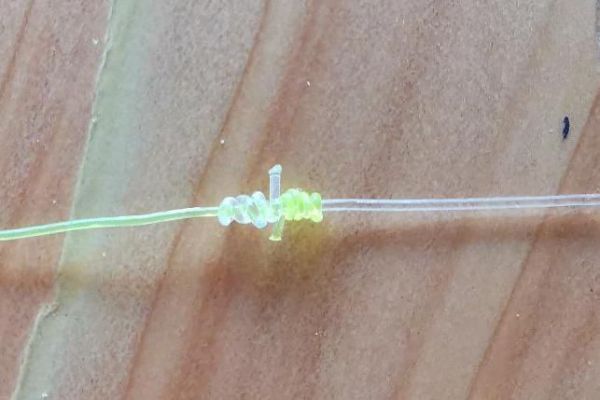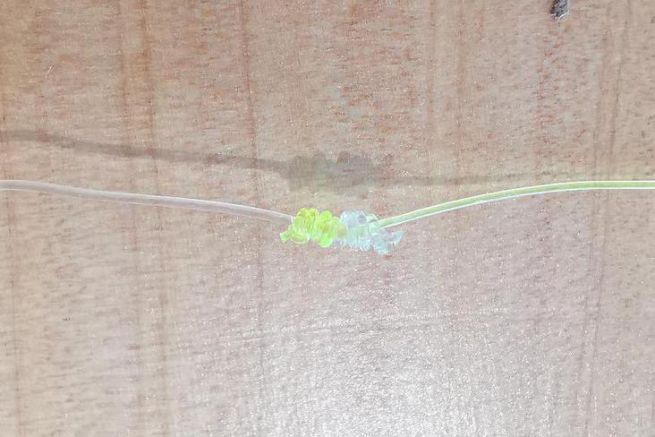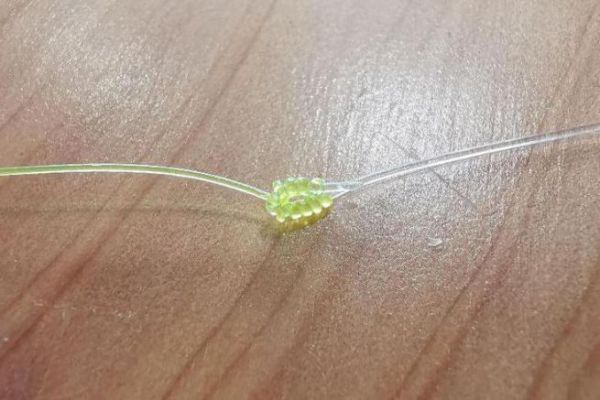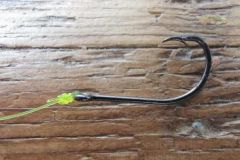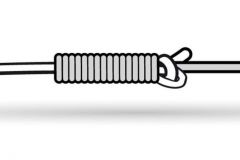This surgeon's knot is particularly useful with small-diameter nylon, which is particularly soft and not always easy to handle. It's easy to make, so you can tie them quickly and efficiently.
In this tutorial, for the sake of visibility, I've used 45/100 and 40/100 nylons, which are absolutely too big for this knot (even if it's still strong), as they can't be fully constrained and perfectly tightened.
Step 1:
Take your two nylon strands, and with the main strand (the thicker one) form a large loop and place the other parallel from downstream to upstream of the main strand.
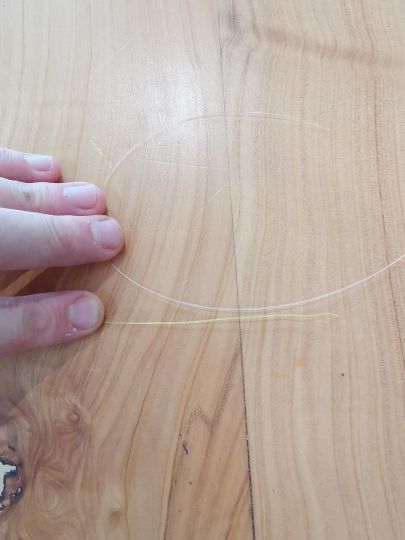
Step 2:
With the thinner strand, make a first turn around the main strand.
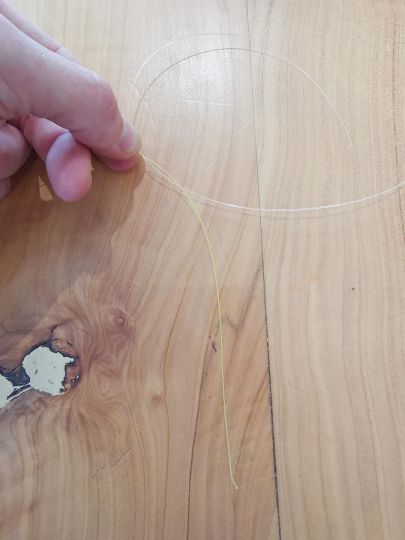
Step 3:
Repeat 4,5,6 turns depending on the diameter and rigidity of your nylons.
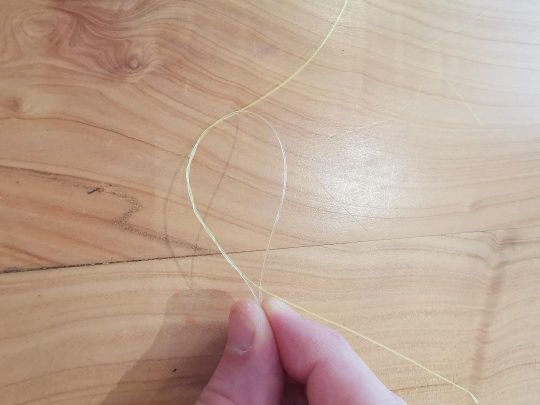
Step 4:
Join the two ends of the main wire and hold them between your fingers.
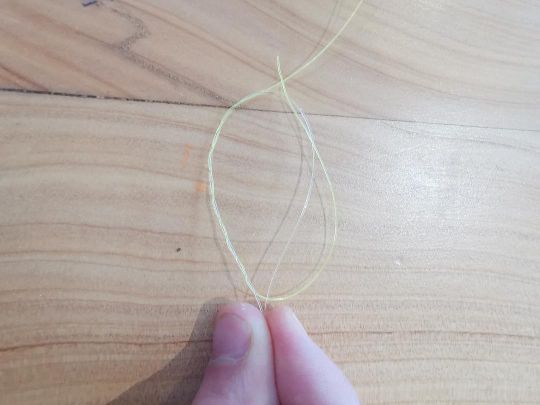
Step 5:
Then make the same number of turns on the other part of the main strand, parallel to step 4.
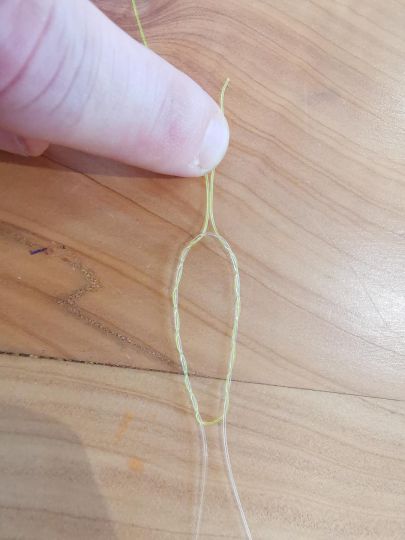
Step 6:
Moisten the knot and tighten it gradually, pulling simultaneously on both strands of the main nylon and the thinner nylon.
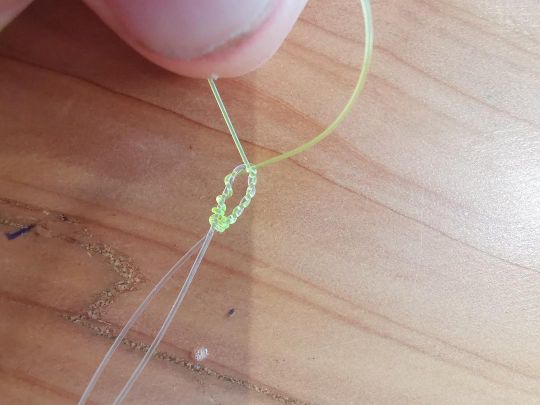
Step 7:
Once your knot is perfectly tightened, cut off any excess threads.
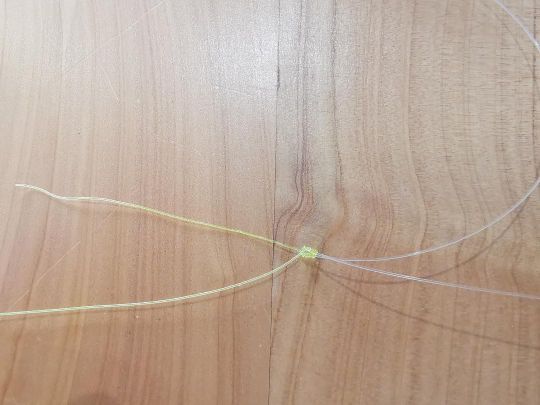
Advantages of the surgeon's knot :
- Solid
- Possible with nylons of different diameters
- Particularly effective with small diameters
- Easy to make
Disadvantages :
- Not recommended for large nylons

 /
/ 